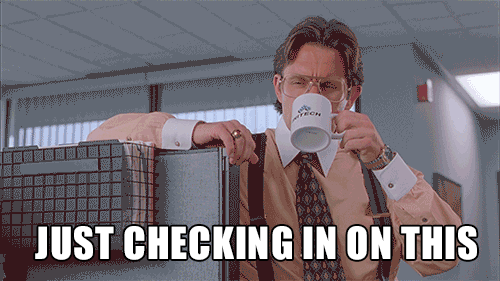No, I (Probably) Won’t Reply to Your Email Right Away
For a balanced approach to client communication, steering away from constant email checking is important. The key is to be responsive without being instantly available, fostering healthier client relationships.
Not too long ago I read this in an email:
Please watch for those emails and respond quickly if something isn't right.

I certainly appreciate communicative clients—it’s far better than getting crickets! But the message above assumes that people, regardless of industry, have email open all day just waiting to reply whenever a new email comes in. If I did that, it would take twice as long to get any actual work done and the quality of my work would plummet.
How do I know this? Because been there, done that.
In the early days of running this studio, I used to check email frequently. Far too frequently. Any time I had a small break between tasks or projects I’d open my email app.
First thing in the morning, open my email.
Before ending my workday, open my email.
Back from a lunch break? Open my email.
Just got off a call? Open my email.
Procrastination? Open my email.

It was far too much. For several years that followed I got better, but it wasn’t until I really implemented a good productivity system that it got sane (even if my constant tweaking of said productivity system is not sane).
These days I check and triage my email twice a day—once during my “Admin” time block and once before I close up the studio for the day. (Sometimes I open it up more often but that’s almost always because there’s information I need to get to be able to work on a specific project.) The reasons for keeping email checking to an absolute minimum like this aren’t all that different than the reasons I don’t do unscheduled phone calls:
- To protect my time
- To protect my flow/focus
- To protect and improve my productivity
- To serve my clients better
The fact is, when you hire me, we’re not going to be sitting in the same space—we may very well may not even be in the same time zone or country! Just like so many other studios and independent creatives, the work I do for clients is asynchronous. In order to get the work done, I need to schedule out big blocks of time. Constantly checking email impedes that.
I’m sure some folks reading this may be thinking, “well that would never work for me.” And maybe it won’t—I can’t say one way or the other. But I can say that I used to think that too. I used to think that immediately responding to an email as soon as I’d hear that notification tone or see the red bubble come up was the “right” way to conduct business in order to keep clients happy and keep them coming back. I was wrong.
Being responsive to client communications and requests doesn’t mean you have to be at their beck and call and respond as quickly as possible. That doesn’t mean you sort of just wing it either. There needs to be a balance, and more importantly, you need to set up expectations. In my case, I make it clear to clients when they can expect to hear from me when it comes to their projects or website support requests. That creates a promise that I essentially stake my reputation on.
I’m in no way saying everyone has to do it this way. What I am saying is that sometimes in our work and businesses we create additional stress by simply trying to please everyone. The reality is that clients have their own work to focus on as well. As long as you’re communicating (and producing good work), you’ll be okay. The clients that demand you be available whenever they call or text (shudder) or send an email are just going to drain your energy. Set boundaries and not only will you feel better, you’ll very likely produce much better work.
In the pursuit of a balanced and efficient workflow in a crazy fast business world, it's crucial to extend this principle beyond email management. Establishing clear communication guidelines and response timeframes for clients ensures mutual understanding and helps build trust. Incorporating technology tools, like automated replies or project management platforms, can streamline interactions without sacrificing productivity. By proactively setting expectations and integrating effective communication strategies, you not only protect your time and focus but also foster a healthier working relationship with clients. Remember, responsiveness is not synonymous with immediate availability—it's about thoughtful engagement and delivering quality results within agreed-upon timelines. Embrace a responsive, not reactive, approach to client interactions for sustained professional success.